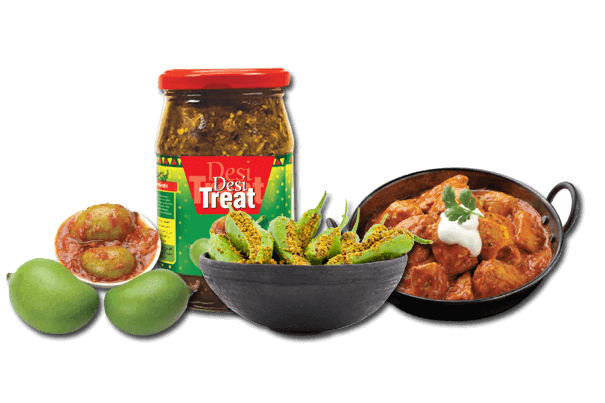Man is a sophisticated being and he is not satisfied by eating just wholesome and nutritious foods. He requires spicy adjuncts along with his food to make it palatable so that he can enjoy his meal. In this context pickles – an adequately spiced unfermented preparation – has gained importance in the Indian menu and occupies a special place. There are many pickles and chutney marketing agencies now. Preservation of fruits and vegetables in the form of pickles is an old art and a variety of these products are made in Indian homes and consumed. However, the taste and method of preparation varied, though the basic principle of pickling i.e. curing prepared fruits and vegetables by salting, acidifying, addition of vinegar and/or by using oil, and in almost all cases mixing of spice powders of a varied composition. Pickles are of different types: pickle in oil, pickle in citrus juice, pickle in brine and pickle in vinegar. Fruit chutney is a preserved product similar to a pickle, which contains a minimum of 40% of fruit content and 50% of solids (TSS) and with acidity not more than 20%. It is a product of Western preference and hence spiced less. Both pickles and chutneys are consumed along with staple foods such as rice, chapathi, bread, samosa, upma, etc. as a side dish to increase appetite. The market for pickles and chutneys are on the increasing side in both domestic and export markets. The present production of pickles and chutneys is about 50,000 MT valued to Rs.100-150 crore per annum of which substantial quantity is exported.
Fruits and vegetables are available during different seasons, which vary from product to product, in abundance. Green mangoes- Feb. to May, Tomatoes – July to Oct. & Dec. to March, Acid limes – Dec. to March & July to Sept., Green chillies – Almost throughout the year, Carrot – July to Feb. and so on. The raw materials are to be processed during the season, prepared, cured, dehydrated and stored for ready use all round the year. Powdered spices are the other raw materials of importance in instant pickles preparation. Good quality dry spices only are to be used. They are cleaned, sun dried/mechanically dried and ground to the required particle size and used as freshly ground spices. Edible oil such as sesame oil/mustard oil has to be used. Glacial acetic acid can be used instead of vinegar (with required dilution). Dry powdered salt is to be used. All the materials can be locally procured. Packaging materials also form an important input like glass bottles, caps, flexible pouches and so on.
Fully matured fresh raw mangoes/limes/other fruits and vegetables are washed and cut into uniform sizes, brine cured at optimal conditions or can be used directly for mixing salt and other ingredients and preparing the pickle. Cleaned and dried spices like red chillies, turmeric and mustard are ground separately and are mixed with the cured or select edible oil (with seasoning added and fried in it), garlic, ginger paste, vinegar, etc. The prepared fresh pickles has to be cured for a week in plastic carboys or wooden barrels. Periodical mixing will help for quick and uniform salt equilibration. The cured pickles are then packed in dry bottles, sealed with cap and labeled, packed in CFB boxes and dispatched for sale. The fruit chutney is made by cooking the prepared pieces with sugar, spice extractives, etc. to a required consistency, sugar percentage and acidity, finally finishing it with required quantity of vinegar. Then packed in bottles as in case of pickles. F.P.O Licence has to be obtained and the production has to be done under good manufacturing practice.





